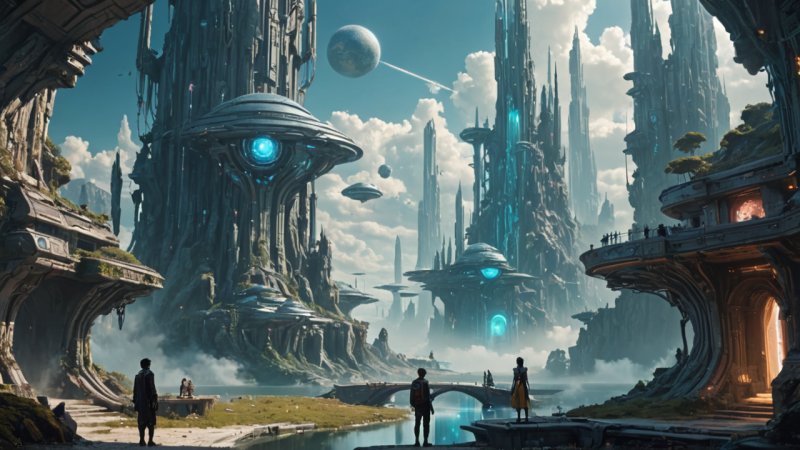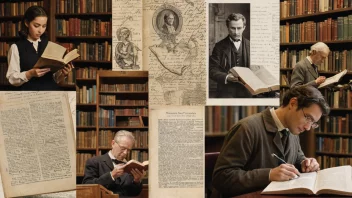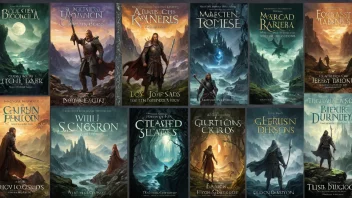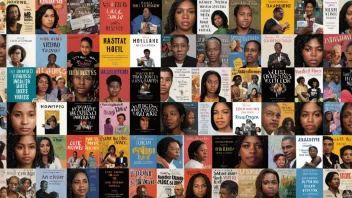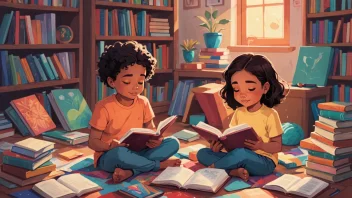In the realm of literature, fantasy has long held a unique position, allowing readers to escape the constraints of reality and immerse themselves in worlds limited only by imagination. However, as technological advancements continue to evolve, they have begun to play a pivotal role in how these fantastical realms are created, developed, and experienced. From the rise of digital storytelling to the use of augmented reality in enhancing the reader's experience, technology is not only reshaping the landscapes of fantasy worlds but also influencing the very narratives within them. This article explores the multifaceted relationship between technology and fantasy literature, delving into how authors leverage these tools to craft compelling narratives and create immersive experiences for readers.
1. The Evolution of Fantasy Literature
To understand the impact of technology on fantasy worlds, it's essential to trace the evolution of the genre itself. Fantasy literature has its roots in oral storytelling, ancient myths, and folklore, with works like J.R.R. Tolkien's "The Hobbit" and C.S. Lewis's "The Chronicles of Narnia" marking significant milestones in the 20th century. These foundational texts established the tropes and conventions that would come to define the genre. However, as society progressed and technology advanced, so too did the storytelling methods and themes explored within fantasy.
1.1 From Print to Digital
The transition from print to digital formats has revolutionized the way stories are told and consumed. E-books and audiobooks have made fantasy literature more accessible than ever before, allowing readers to explore vast worlds without the limitations of physical books. Moreover, the advent of self-publishing platforms like Wattpad and Kindle Direct Publishing has democratized the publishing landscape, enabling aspiring authors to share their unique visions of fantasy worlds without the constraints of traditional publishing.
1.2 The Rise of Multimedia Storytelling
Multimedia storytelling, which combines text with visual and audio elements, has emerged as a powerful tool in the fantasy genre. Graphic novels, illustrated editions, and interactive narratives allow authors to craft richer, more immersive experiences. Works like Neil Gaiman's "The Sandman" series highlight how illustrations can enhance the narrative, providing readers with visual representations that deepen their understanding of the story's themes and characters.
2. Technology and World-Building
World-building is a cornerstone of fantasy literature, and technology has introduced new methodologies for authors to create elaborate settings. Utilizing software tools and digital platforms, writers can meticulously map out their worlds, developing intricate histories, geographies, and cultures that breathe life into their narratives.
2.1 Geographic Information Systems (GIS) in Fantasy
Authors are increasingly turning to Geographic Information Systems (GIS) technology to visualize and organize their fantasy worlds. GIS allows writers to create detailed maps, track character journeys, and establish the geographical relationships between various elements in their stories. For instance, George R.R. Martin's "A Song of Ice and Fire" series has benefited from extensive mapping, helping fans navigate the complex territories of Westeros and Essos.
2.2 Online World-Building Communities
The Internet has fostered a vibrant community of world-builders who share their creations and collaborate on projects. Platforms like World Anvil provide tools for writers to craft detailed lore, characters, and settings while allowing others to contribute and expand upon existing worlds. This collaborative approach to world-building not only enhances the depth of fantasy literature but also creates a sense of community among readers and writers.
3. Enhanced Reader Engagement through Technology
As technology continues to evolve, so does the way readers engage with fantasy literature. Enhanced reader engagement techniques, such as interactive storytelling and augmented reality (AR), are providing unique ways for audiences to experience fantasy worlds.
3.1 Interactive Storytelling
Interactive storytelling allows readers to influence the narrative outcome, creating a personalized experience that can significantly enhance engagement. Platforms like Twine and Choose Your Own Adventure books have paved the way for this narrative style, allowing readers to make choices that impact the direction of the story. This format has gained popularity within the fantasy genre, enabling readers to explore different paths and outcomes in fantastical settings.
3.2 Augmented Reality and Virtual Reality
Augmented Reality (AR) and Virtual Reality (VR) are transforming the way readers interact with fantasy literature. AR applications can bring illustrations to life, allowing readers to visualize characters and settings in a more immersive way. Meanwhile, VR experiences enable users to step into their favorite fantasy worlds, exploring landscapes and engaging with characters as if they were part of the story itself. This technology not only enhances reader engagement but also has the potential to create new narrative forms that blend literature with interactive experiences.
4. Thematic Exploration of Technology in Fantasy Literature
As technology becomes more ingrained in our daily lives, it also influences the themes explored within fantasy literature. Authors are increasingly addressing the implications of technology within their narratives, often reflecting contemporary societal concerns.
4.1 The Dystopian Lens
Dystopian themes frequently emerge in fantasy literature, often serving as cautionary tales about the potential consequences of unchecked technological advancement. Works like "Ready Player One" by Ernest Cline and "The Hunger Games" by Suzanne Collins explore the darker side of technology, examining how it can lead to societal division and control. These narratives resonate with readers navigating an increasingly digital world, prompting critical reflection on the role of technology in their lives.
4.2 Technology as Magic
Some authors blur the lines between technology and magic, presenting technology as a form of sorcery within their fantastical worlds. In works like "The Broken Earth" trilogy by N.K. Jemisin, advanced technology coexists with magical elements, challenging readers to reconsider their definitions of both. This thematic interplay invites deeper discussions about the nature of power, control, and the potential for technology to both create and destroy.
5. Future Directions: The Integration of AI and Fantasy Literature
As we look to the future, the integration of artificial intelligence (AI) into the realm of fantasy literature holds exciting possibilities. AI can assist authors in generating ideas, developing characters, and creating intricate plots, resulting in unique narratives that blend human creativity with machine learning capabilities.
5.1 AI-Generated Narratives
AI-generated narratives are already beginning to emerge, showcasing the potential for technology to influence storytelling in innovative ways. While some may argue that AI lacks the emotional depth and creativity of human authors, there are exciting opportunities for collaboration. Authors can harness AI's capabilities to explore new narrative structures and themes, ultimately enriching the fantasy genre.
5.2 Reader-Driven AI Experiences
In the near future, we may see the rise of reader-driven AI experiences, where readers can interact with AI-generated characters or storylines in real-time. This could create a dynamic storytelling environment where the boundaries between author, reader, and narrative blur, allowing for more personalized and immersive experiences.
Conclusion
In conclusion, technology is playing an increasingly vital role in shaping fantasy literature, influencing everything from world-building to reader engagement. As authors embrace digital tools, interactive storytelling, and emerging technologies like AI, the boundaries of the genre continue to expand. The relationship between technology and fantasy literature is a dynamic and evolving one, reflecting both the capabilities of modern storytelling and the ever-changing landscape of our digital lives. As we move forward, readers can expect to encounter even more innovative narratives that challenge traditional conventions and invite them to explore fantastical worlds in new and exciting ways.
